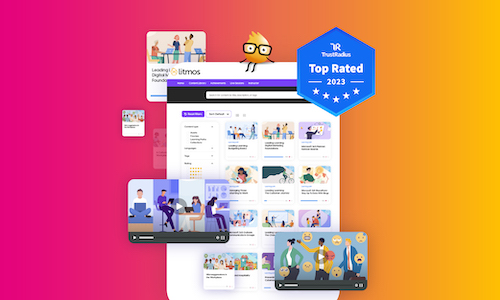Understanding the Role of Training in Extended Enterprise
There’s much talk about the extended enterprise today. For businesses with suppliers, partners, customers, and other important stakeholders, relationships extend beyond the boundaries of the organization. Consequently, so do organizational responsibilities. One of those responsibilities is learning and development (L&D). With that in mind, this blog will explore how training can give everyone involved in the extended enterprise the tools and knowledge they need to lock in customer loyalty and drive revenue.
What is ‘the extended enterprise’?
The extended enterprise comprises of a full suite of relationships that coordinate to deliver customer adoption, satisfaction, and loyalty. When businesses refer to the extended enterprise, they are referencing their network of vendors, partners, customers, and other actors within the supply chain that serve as an extension of their organization, rather than a group of unrelated businesses.
The stronger the partners, the stronger the enterprise. Develop your partners, and your enterprise will flourish. Take, for example, Japanese auto manufacturers in the 1970s and ‘80s. Rather than the typical hands-off relationship most manufacturers had with their supplier at the time, companies like Toyota worked with their supply chain to make their vendors more effective. The automakers shared their manufacturing strategies with suppliers and collaborated to make better cars. It was about learning together.
The result was a booming Japanese automotive industry.
Sharing knowledge within the extended enterprise
Knowledge sharing in the supply chain isn’t unusual. Organizations often provide learning materials about their products and services to their partners. These programs run the gamut from marketing efforts (free product training) to revenue streams (paid certifications.)
Learning in the extended enterprise goes beyond training, however. It’s more about sharing knowledge. This doesn’t always mean the knowledge flows one way, either. Effectively sharing knowledge is not as simple as sending a training asset to your partners. It means following up with them to gather feedback on the training, on your product, and on what their customers are saying about your product or product training. Ideally, the entire extended enterprise is continually learning together.
The challenge here is to figure out what elements of organizational learning can and should be shared. This might go beyond just product or service-related information. If some partners have excellent business practices that could be shared with the rest of your extended enterprise, doing so may improve key outcomes for your business, as well as its vendors, partners, and customers.
Not all partners will be open to knowledge sharing. It may be seen as an intrusion by some. However, it’s worth trying to collaborate. When you make the effort to improve as a group and implement consistent strategies across the enterprise, your offerings and the customer experience will likely be better for it.
How to train the extended enterprise
Building your own strategy for extended enterprise training requires several concrete steps:
- Know your extended enterprise: Define the scope of your extended enterprise. Know who your partners are, and what’s at stake for each when it comes to the customer experience.
- Know what learning is already available: What already exists? What specific skills have been developed and what knowledge about the contribution to the enterprise has been documented? Also, what exists in your partners’ libraries? These questions should be addressed internally and in conjunction with the other groups in your extended enterprise.
- Know what learning you need: After you know what you have, it’s time to take stock of what your enterprise training program might need — information that would be valuable but does not yet exist. Again, this assessment should be conducted both internally and in collaboration with partners.
- Know what can be shared: Sharing knowledge is important, but that doesn’t necessarily mean everything gets shared. Protect any proprietary knowledge that your organization wouldn’t want to share widely. (The Toyota mantra was “share intensively, but selectively.”)
- Create a strategy for sharing knowledge: A collaborative approach should be taken about what’s to be shared, and how to share it. What extended enterprise learning management solutions or platforms can be used? How will permissions be handled? How will schedules and messaging be coordinated? You’ll also have to take business questions into consideration and assess the business case in terms of savings and revenue. Leaders should be asking who pays for what and whether there are revenue, credentialing, or certification opportunities for extended enterprise training.
Building an extended enterprise training program by following the steps listed above can be a considerable effort, but can also yield significant benefits: effectiveness, efficiency, consistency, and agility.
Extended enterprise learning is about the customer
When you develop a strategy for training the extended enterprise, it’s useful to focus on the idea of the “total customer experience.” Everything you do is geared toward the customer’s success, and that includes learning.
You may also want to incorporate learning content that helps your partners hone soft skills like critical thinking, active listening, and collaboration. This may ease some of the concerns partners have about sharing information with you and other members of your extended enterprise.
Because it’s your job (and the job of your extended enterprise) to ensure customers find success and satisfaction with your product, any information you have that can help achieve this should be inventoried, used, and shared. Understanding this aspect of the business, is part of the role of contributing to organizational success. That’s a valuable understanding for L&D to offer.
Want to boost revenue by training your entire enterprise? Start by ensuring your salespeople and partners get the enablement they need. Check out our latest eBook, Rev Up Revenue: Sales Training for Every Career Stage to gain insights on the best practices for boosting performance through continuous training.





